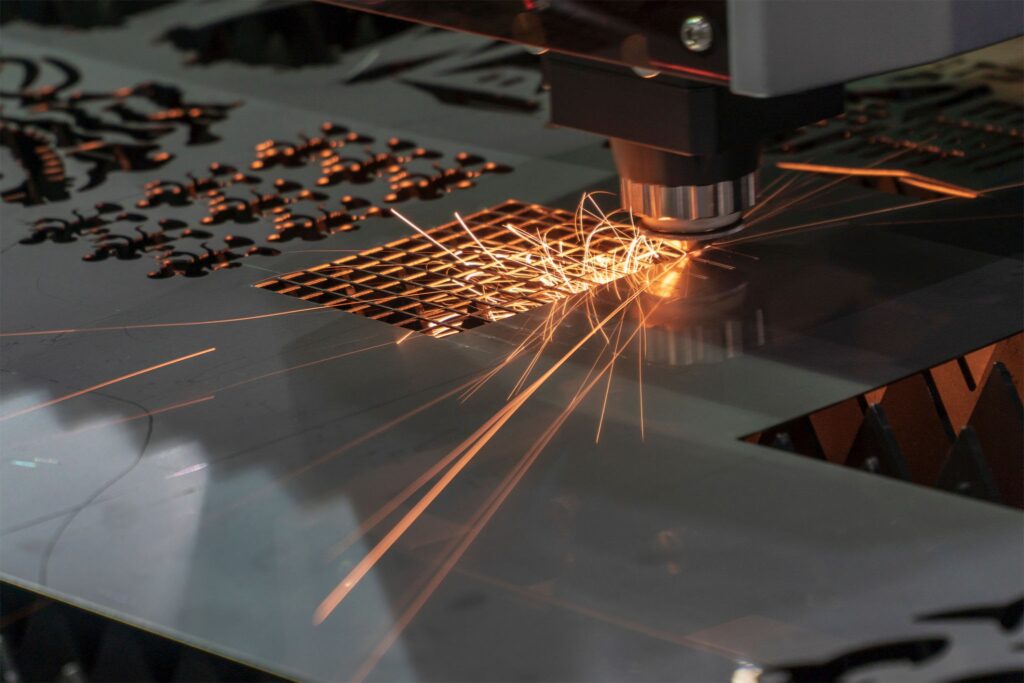Hafnium, a refractory metal known for its high melting point and excellent heat resistance, has various applications in nuclear reactors, aerospace, and electronics. Laser cutting, celebrated for its precision and adaptability, is a vital technology in processing hafnium, enabling intricate designs and high-quality cuts. In this article, we will explore hafnium as a material, its applications, and the indispensable role of laser cutting in shaping this high-temperature and versatile metal.

1. Overview of Hafnium and Its Applications
Hafnium, a metal often found in zirconium minerals, is employed in a variety of applications:
- Nuclear Reactors: Hafnium is used as a neutron absorber in nuclear reactors, helping control the fission process and ensuring safety.
- Aerospace: Hafnium is used in aerospace applications, particularly in rocket propulsion systems, due to its high melting point and heat resistance.
- Electronics: In the electronics industry, hafnium-based compounds are used in the production of microchips, contributing to improved performance.
2. Basic Properties of Hafnium and Its Applications
High Melting Point:
- Hafnium’s exceptionally high melting point makes it suitable for high-temperature applications, such as in rocket engines and nuclear reactors.
Heat Resistance:
- Hafnium exhibits excellent heat resistance, allowing it to withstand extreme temperatures and harsh environments.
Neutron Absorption:
- Hafnium’s neutron-absorbing properties are crucial for its use in nuclear reactors to control nuclear fission.
Challenges and Advantages of Laser Cutting in Hafnium Processing:
Laser cutting is fundamental in processing hafnium, offering advantages such as high precision, minimal material wastage, and reduced contamination. Challenges include efficient material removal and managing the high melting point of hafnium.
3. Laser Cutting Technology
Laser Cutting Techniques for Hafnium:
Different laser cutting techniques are commonly employed for hafnium, including:
- Fiber Laser Cutting: High-power fiber lasers offer precise and efficient cutting with minimal heat-affected zones.
- CO2 Laser Cutting: Suitable for thicker hafnium sheets and bulk materials.
Principles of Laser Cutting:
Laser cutting involves the interaction between a high-intensity laser beam and the material. The laser’s energy is absorbed by the hafnium, leading to localized heating and vaporization, which effectively removes material.
Types of Lasers for Hafnium Cutting:
| Laser Type | Wavelength | Suitability |
|---|---|---|
| Fiber Laser | 1.06 µm | High-speed, efficient cutting with precision. |
| CO2 Laser | 10.6 µm | Ideal for thicker hafnium sheets and bulk material cutting. |
4. Material Processing and Challenges
Effective Laser Cutting of Hafnium:
Efficient laser cutting of hafnium necessitates addressing various challenges, including:
- Material Removal: Ensuring efficient ablation of hafnium without excessive debris.
- High Melting Point: Managing the extreme heat generated during the cutting process due to hafnium’s high melting point.
- Contamination: Minimizing contamination from debris and gas residues.
Tables can be used to discuss the impact of process parameters on cut quality:
| Parameter | Impact on Cut Quality |
|---|---|
| Laser Power | Influences cutting speed and depth. |
| Wavelength | Affects the material’s absorption and, consequently, the cutting process. |
| Pulse Duration | Determines the energy delivery, which impacts the cut quality. |
| Scan Speed | Controls the speed of the laser beam and its effects on the material. |
5. Laser Cutting in Hafnium Applications
Role of Laser Cutting in Hafnium Processing:
Laser cutting plays a pivotal role in shaping hafnium for various applications, enabling intricate designs and high-quality cuts, enhancing the overall performance and durability of hafnium-based products.
Advantages over Traditional Methods:
Compared to traditional methods of hafnium cutting, such as electrical discharge machining (EDM) or abrasive cutting, laser cutting offers several advantages, including:
- Higher precision and control over the cutting process.
- Reduced material waste and increased yield.
- Minimized risk of damage or contamination, especially in critical applications like aerospace and nuclear reactors.
Case Study: Laser Cutting in Aerospace Hafnium Components
A compelling example of laser cutting’s efficacy in hafnium processing can be found in the aerospace industry. Hafnium is used in rocket propulsion systems, where its high-temperature resistance is critical. Laser cutting technology allows for the precise shaping of hafnium components, ensuring they meet the stringent quality and performance requirements of the aerospace sector.
